What's in this article?
What is Mononucleosis?
Infectious mononucleosis is sometimes called mono or the kissing disease. It is caused most often by the Epstein-Barr virus (EBV), which is in the herpesvirus family of organisms. Most people become infected with EBV at some point in their lives. Like all herpesviruses, EBV stays within the body once a person is infected. Most of the time, the virus is in an inactive (latent) state, but occasionally the virus multiplies and is shed in saliva and other body fluids.
Causes of Mononucleosis
The most common cause of mononucleosis is the Epstein-Barr virus, but other viruses can also cause this disease.
Mononucleosis usually isn’t very serious. Most adults have been exposed to the Epstein-Barr virus and have built up antibodies. They’re immune and won’t get mononucleosis again.
Symptoms of Mononucleosis
The most common symptoms of mono are a high fever, a severe sore throat, swollen lymph nodes (sometimes called swollen glands) and tonsils, and weakness and fatigue. Symptoms usually start 4 to 6 weeks after you are exposed to the virus.
Mono can cause the spleen to swell. Severe pain in the upper left part of your belly may mean that your spleen has burst.
Diagnosis of Mononucleosis
Your health-care provider will rely on a combination of clinical and laboratory findings to diagnose mononucleosis. They will ask about the course of the illness and perform a physical exam.
The following blood tests can help confirm the diagnosis:
- A complete blood count may show the white blood cell count to be high because of the infection. An increase in a type of white blood cell called “atypical lymphocytes” is common.
- Liver function tests show elevation of liver enzyme levels in nearly 90% of people with mononucleosis.
- A test that measures a type of antibody known as heterophile antibody is often performed. Heterophile antibodies are present in about 80%-90% of people with mononucleosis. They form in response to infection with Epstein-Barr virus as well as to other infections.
- This test result is frequently negative in young children or early in the course of the disease.
- The qualitative heterophile antibody test (Monospot) gives either a positive or negative result. This test takes minutes to perform and provides results right away.
- Epstein-Barr virus-specific antibody testing may be used for people with suspected mononucleosis who have heterophile antibody test results that are negative. It can also be used to test for atypical cases of mononucleosis or in young children who are suspected of having mononucleosis.
How is Mononucleosis spread?
Mononucleosis is usually acquired by contact with the saliva or mucus of a person who is infected with or is carrying the virus. (Mononucleosis is also known as the “kissing disease,” because it can be acquired through kissing.) Occasionally, it can be spread by coughing or sneezing, or when an infected person shares food or tableware with another person.
It is nearly impossible to prevent Epstein-Barr infections, because most healthy people carry the virus and can pass it on to others. After the virus enters the body, the immune system begins to produce antibodies against it. The Epstein-Barr virus remains inactive in the body throughout life, but it may become active from time to time. However, reactivation of the virus does not result in clinical symptoms in individuals who have normal immune systems.
Treatment for Mononucleosis
Much of the treatment for mononucleosis is aimed at making your child more comfortable until the infection goes away on its own. For example
- Some pediatricians may recommend giving your youngster acetaminophen to reduce the fever and ease pain.
- Sore throats can be treated by gargling with warm water and salt.
- Bed rest can be important for a child feeling fatigued.
Because a virus causes mononucleosis, infected children should not be treated with antibacterials.
In a small percentage of EBV-infected children, corticosteroids such as prednisone are given, but only if certain complications are present, such as inflamed tonsils that may block the breathing passages.
Children with infectious mononucleosis should not participate in contact sports until the swelling of their spleens subsides. If the body is hit in the area of an enlarged spleen, the spleen can rupture or tear open, causing internal bleeding that can lead to death. Keep in mind that this is uncommon and that mononucleosis rarely results in death.
When To Call a Doctor
If you have been diagnosed with mono, seek care immediately if:
- You have severe pain in the upper left part of your abdomen. This may mean that your spleen has ruptured. Rupture of an enlarged spleen caused by mono is rare. It is most likely to happen because of a blow to the abdomen.
- Your tonsils become so swollen that you find it difficult to breathe or swallow.
If you have not been diagnosed with mono and you have a severe sore throat that has lasted longer than 2 to 3 days after trying home treatment, call your doctor in 1 to 2 days.
If you have not been diagnosed with mono and have tried home treatment for 7 to 10 days, contact your doctor if you have:
- A lack of energy.
- Body aches.
- Swollen lymph nodes (sometimes called swollen glands).

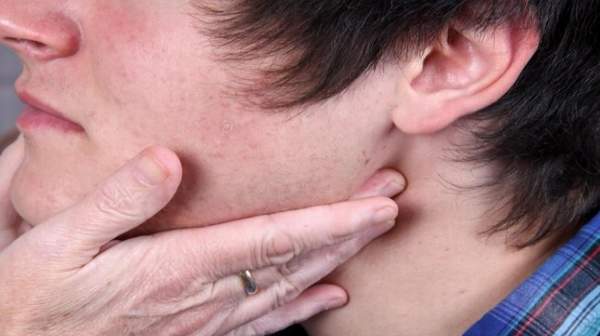
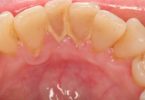
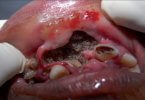
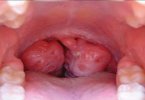
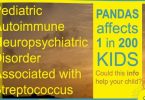
Leave a Comment